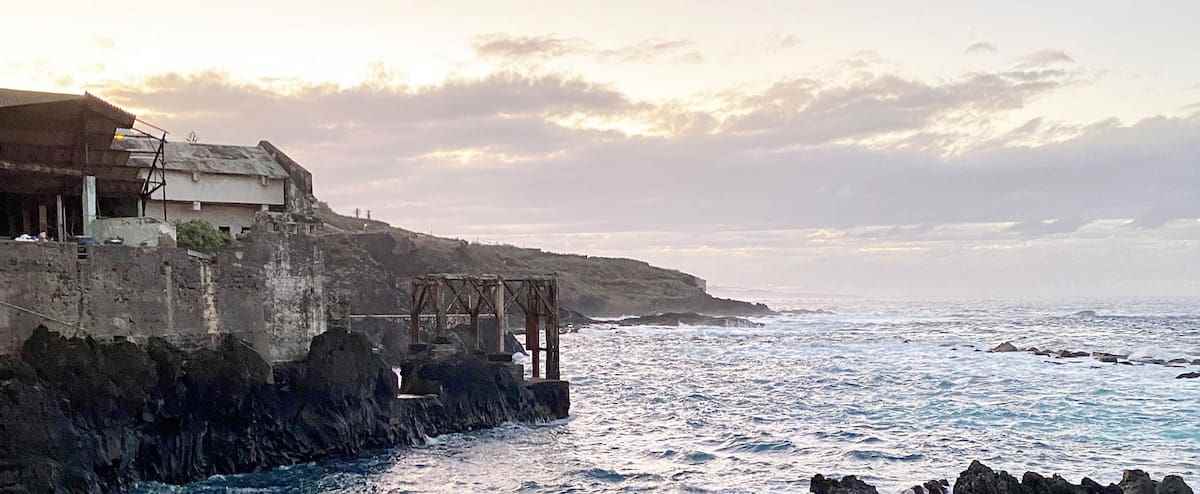Jewel of the Canary Islands archipelago, Tenerife has a thousand secrets that you have to take the time to discover patiently.
Photo provided by Chantal Benhamron
Los Abrigos, a small seaside village in the south.
The hardest part of setting foot in Tenerife, the largest of the Canary Islands, is choosing between the picturesque north, the more summery south, the laid-back east, the bustling west and the varied activities you can do there. found: idleness at the beach, mountain hikes or gastronomy.
Photo provided by Chantal Benhamron
Los Gigantes, gigantic rock formations on the west coast.
Leaving the very touristy south-west coast, with its well-known and overcrowded beaches, its shopping centers, its restaurants and its rows of hundreds of seaside condos, our choice fell on the south-east coast, in a small a city with a warm and good-natured atmosphere, with its urban beach, its pretty square lined with restaurants and cafés: El Medano.
Photo provided by Chantal Benhamron
The small beach of El Medano, in the heart of the village, with the Montaña Roja in the background which plunges into the ocean.
It is a small windy resort, a paradise for surfers and kiters. You will see them by the hundreds surfing the waves on the nearby beaches or strolling along the seaside promenade.
Very close to the village, we discover La Tejita, a long wild beach of golden sand, little frequented, where you can take long walks on the shore. It is backed by Montaña Roja, an ancient volcano popular with hikers, whose foot plunges into the ocean.
Photo provided by Chantal Benhamron
Montaña Pelada beach, very close to El Medano.
THE HIGHEST PEAK IN SPAIN
An unmissable stopover in Tenerife, we leave one morning by car to attack Teide, the highest peak in Spain and one of the highest volcanic structures in the world. After the highway, you have to climb endless switchbacks in the mountains.
Photo provided by Chantal Benhamron
Panorama on the road to Teide National Park.
The ascent is long, the views are breathtaking: we pass from almost desert landscapes to dense, green vegetation, an atmosphere of palpable humidity. After precipices and ravines, past the small town of Vilaflor, we arrive at Teide National Park.
Here, the lunar landscapes follow one another. Since the dawn of time, lava flows have left rock formations with surreal reliefs, sorts of huge stone mushrooms where vegetation is completely absent.
It is cold at altitude. A cable car brings us closer to the summit of the volcano which culminates at 3750 meters.
Up there, the view is stunning. The brisk air penetrates you, you contemplate, below, fields of lava and a thick sea of clouds which overhangs the old crater of Pico Viejo; the sky is a stunning blue and the summit, majestic, stands in front of you.
THE CAPITAL
A short trip to the capital to discover Santa Cruz, a big city like all big cities. We take the opportunity to discover the north of the island where the weather is a little cooler and cloudy.
First stop: La Orotava, a steep little village on the mountainside, with its magnificently preserved historic centre. We stroll for a while in its time-laden streets.
A MILLENNIUM DRAGONNIER
Then direction Icod de los Vinos, where you can observe, in the heart of the church garden, a mythical tree, symbol of the village, declared a national monument: el drago milenario (the millenary dragon tree), currently the oldest dragon tree in the world, which would be more than a thousand years old.
A last stop in Garachico, a picturesque village with exquisite charm, with its colonial houses, alleys, cafes, cliffs, natural pools and volcanic rock seaside.
♦ The Canary Islands are renowned for enjoying the best climate in the world. There is an ideal and constant temperature all year round, with almost permanent sunshine on its coasts. Volcanic and windy, Tenerife is a paradise for hikers, surfers, those who like to bask on the beaches, lovers of the seabed, mountain enthusiasts, vulcanology enthusiasts, worshipers of Spain and its gastronomy. . In this small Spanish rock half the size of Greater Montreal, in the middle of the Atlantic, off the coast of Morocco, the vacationer discovers a world of possibilities, reliefs, landscapes, fauna and flora.
♦ Tenerife is known for its majestic volcano, the Teide, in the heart of the island, for its contrasts and its microclimates: a few tens of kilometers away, you think you are changing countries, you go from an arid and desert landscape to lush and dense vegetation.





